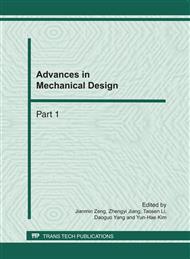p.1031
p.1036
p.1041
p.1046
p.1051
p.1058
p.1065
p.1069
p.1074
Tribological Properties of Serpentine Nanoparticles as Oil Additive under Different Material Friction Pairs
Abstract:
The tribological experiments of different metal frictional pairs were investigated by using MMU-5G friction and wear tester under oil-lubricating condition with serpentine powder additives. The upper and lower specimen pairs were 45 steel/45 steel, 45 steel/HT200 cast iron, HT200 cast iron/45 steel, HT200 cast iron/HT200 cast iron, respectively. Serpentine powder used as oil additive was characterized by transmission electron microscopy (TEM) and x-ray diffraction (XRD). Applying SEM and EDS, the surface morphologies of self-repairing coatings and their chemical compositions were detected. The test results revealed that self-repairing coating could be generated on 45 steel specimen surfaces. However, no obvious self-repairing coating formed on the worn surface in all tests which is mainly due to the unique microstructure of HT200 cast iron and the segregation effect of graphite.
Info:
Periodical:
Pages:
1051-1057
Citation:
Online since:
February 2011
Authors:
Price:
Сopyright:
© 2011 Trans Tech Publications Ltd. All Rights Reserved
Share:
Citation:


